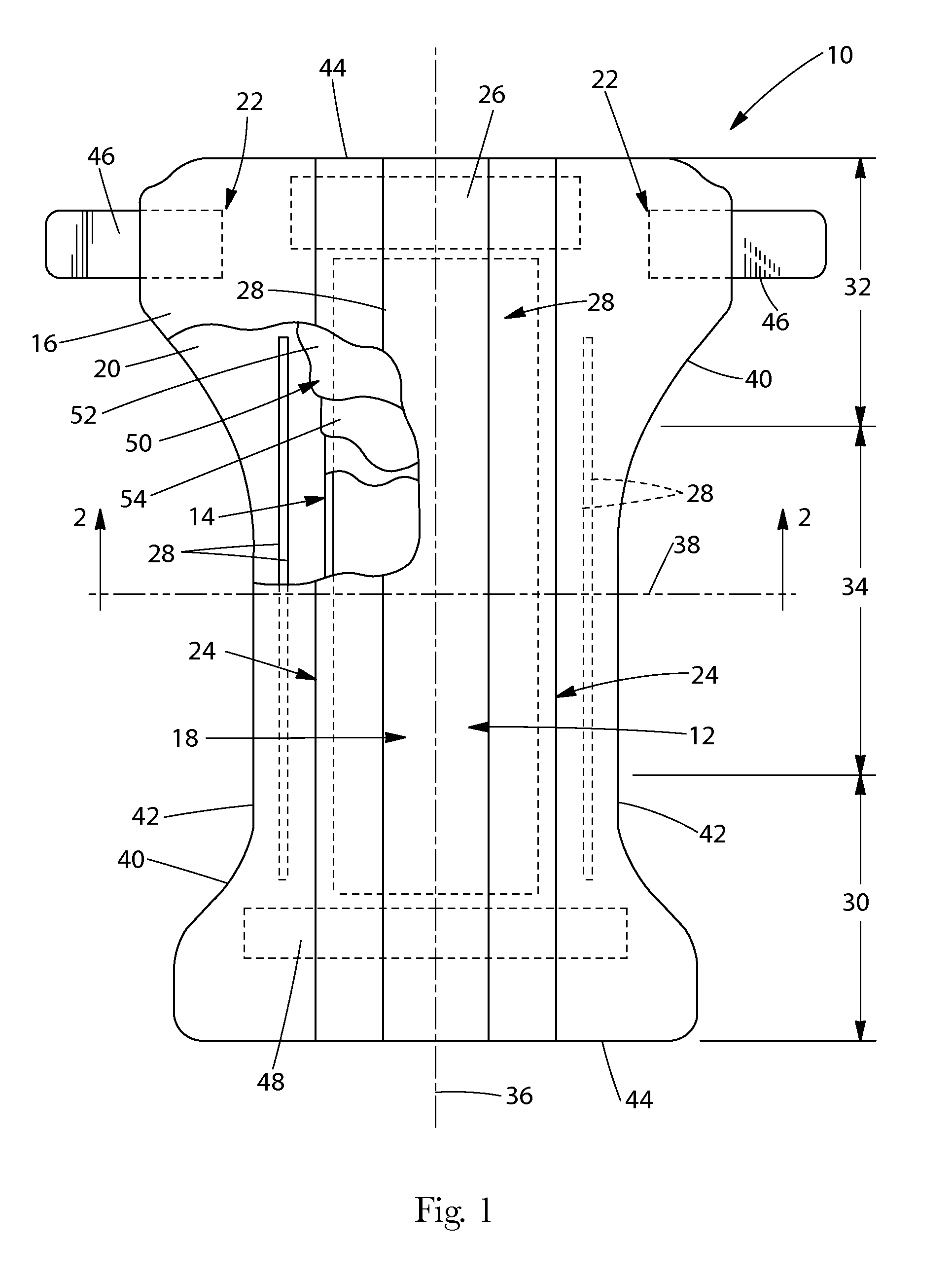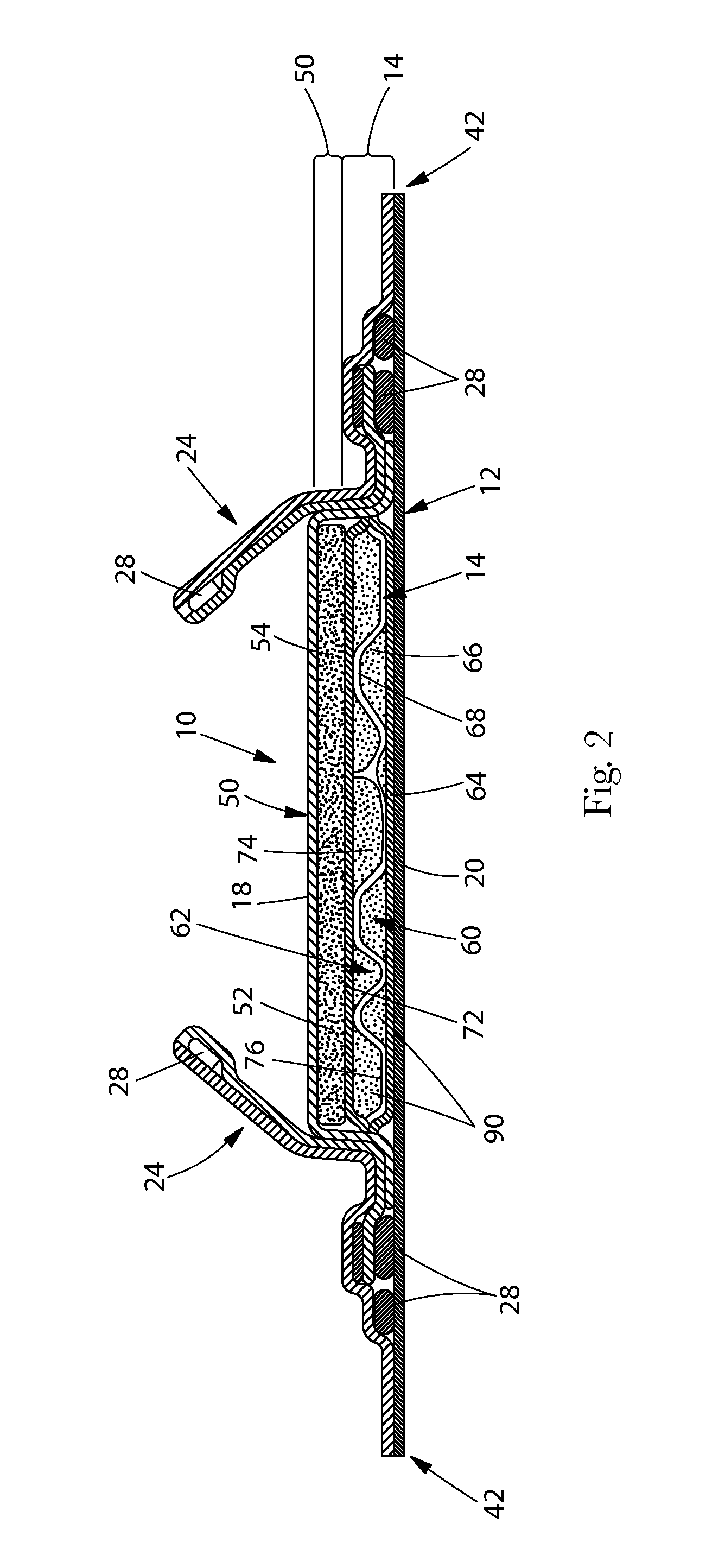Absorbent products having improved packaging efficiency
a technology of absorbent products and packaging efficiency, which is applied in the direction of flexible article containers, transportation and packaging, bandages, etc., can solve the problems of uncomfortable to wear, airfelt (or cellulose) absorbent articles being inefficient to ship, and airfelt (or cellulose) absorbent articles being bulky
- Summary
- Abstract
- Description
- Claims
- Application Information
AI Technical Summary
Benefits of technology
Problems solved by technology
Method used
Image
Examples
examples
[0111]The following Examples provide a comparison between diapers that are commercially available in the United States to diapers having optimized parameters according to the present disclosure. Tables 2-6 provide data for various diaper packages (folded stack length, in-bag stack height, and bag utilization factor) measured according to the Folded Stack Length Test and In-Bag Stack Height Test described in detail below.
TABLE 2In-Bag Stack Height / Bag Utilization Factor Results for Sample Diaper Packages (Size 3)BagChildFoldedIn-BagUtilizationHeightWidthDepthBagPad CountWt. RangeStack LengthStack HtFactorExample(mm)(mm)(mm)CountPer Stack(kg)(mm)(mm)(m2 / pad / m)1.40016611036187-13210920.03402.40116311036187-13206910.03443.40016210936187-13206900.03404.40216211036187-13204900.03465.40016410936187-13206910.0343Avg.206910.0346.21128421752267-132101090.03067.21628922052267-132091110.03198.21328121752267-132081080.03099.21328521852267-132101100.031010.20827422352267-132081050.0304Avg.2091090...
PUM
 Login to View More
Login to View More Abstract
Description
Claims
Application Information
 Login to View More
Login to View More - R&D
- Intellectual Property
- Life Sciences
- Materials
- Tech Scout
- Unparalleled Data Quality
- Higher Quality Content
- 60% Fewer Hallucinations
Browse by: Latest US Patents, China's latest patents, Technical Efficacy Thesaurus, Application Domain, Technology Topic, Popular Technical Reports.
© 2025 PatSnap. All rights reserved.Legal|Privacy policy|Modern Slavery Act Transparency Statement|Sitemap|About US| Contact US: help@patsnap.com



